How to sow a new lawn
Sowing a lawn correctly is key to achieving your dream lawn, and our six step guide will show you exactly how it’s done. We cover everything from the best weather conditions for sowing, what tools you need to sow your lawn, the how to prepare your seed bed, and of course, how to sow your seed!
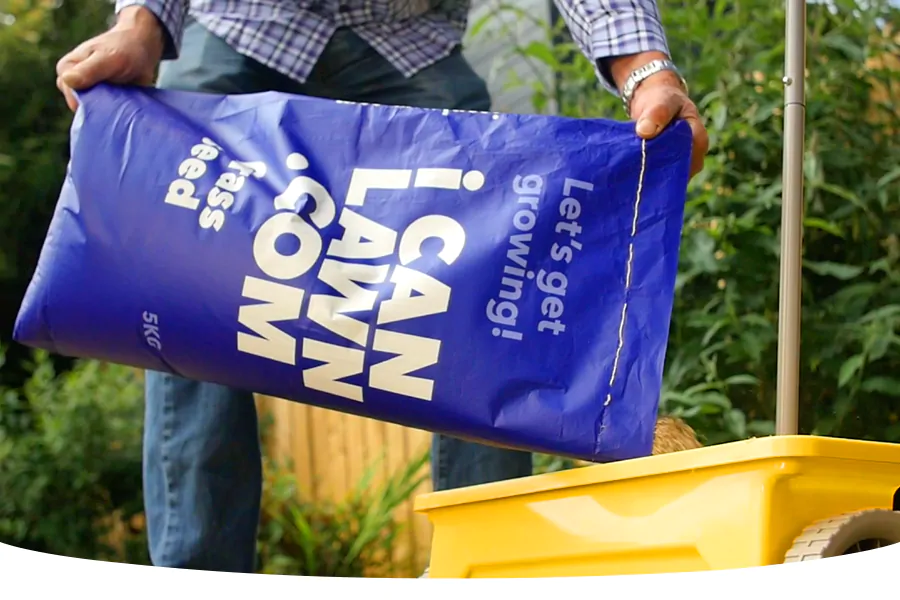

Before sowing, check your local weather forecast as grass seed needs consistent temperatures above 10 degrees for at least two weeks to grow.

Do not sow in flood, frost, snow or extremely hot conditions. This means that typically the best times to sow grass seed are in Spring and Autumn.
With the weather perfect for sowing, it’s now time to prepare your seedbed.
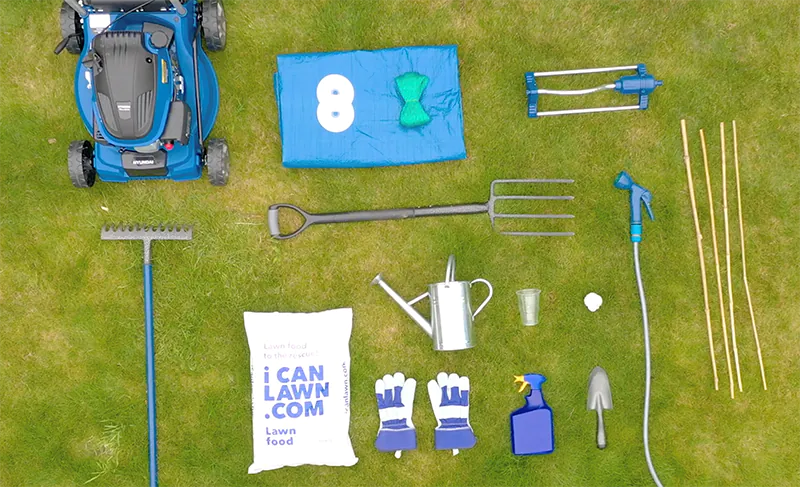
Here’s what you’ll need to prepare your seedbed:
• A garden trowel or weedkiller
• A pre-seed lawn feed
• A garden fork or rotovator
• A rake
• Bamboo canes or string
• A cup
• A watering can, hose or sprinkler
• Net covering or old CDs
• A lawn mower
Equipment at the ready, the first thing you need to do is remove any weeds.
Step One: Remove weeds

If you only have a few weeds, you can remove these by hand using a garden trowel. Make sure to remove all the roots.
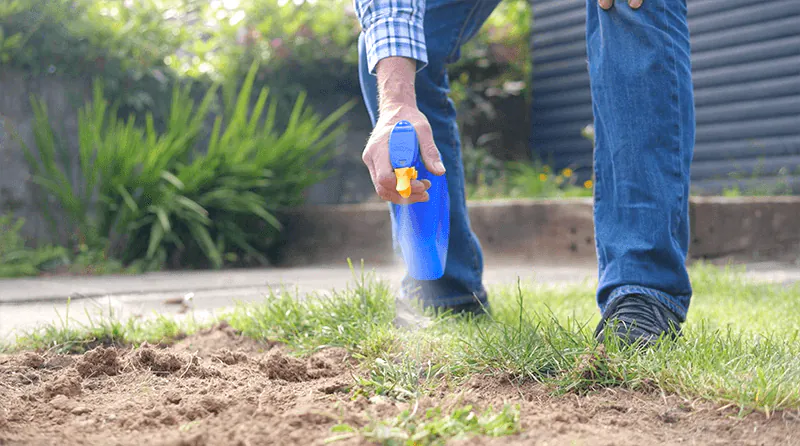
Alternatively, you can target individual weeds by using a selective weedkiller.
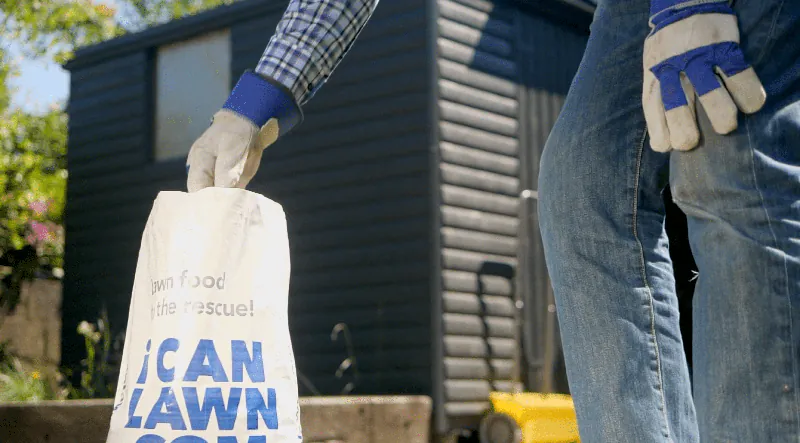
If you find that there are lots of weeds in your lawn, a Feed, Weed and Moss Killer product such as our 3 IN 1 Lawn Rescue will remove them in one application, whilst also feeding your lawn in preparation for seeding.
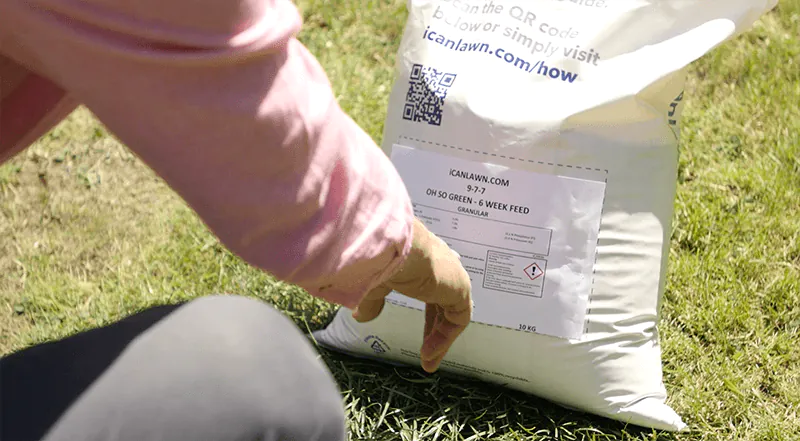
If there are no weeds, you should still apply a pre-seed lawn food such as our Pre-Seed First Feed, which will give your soil the nutrients it needs to speed up the growth of your grass. Whatever product you decide to use, always read the instructions, and wait the recommended time before seeding.
Your seedbed should be weed free and well fed - so you can move onto preparing your seedbed. If you have a large lawn, or difficult clay soils, you may need to hire a machine called a rotovator to do this job for you.
Step 2: Create a fine level seedbed

Using a garden fork, you should spike your soil to break it up and dig it over.
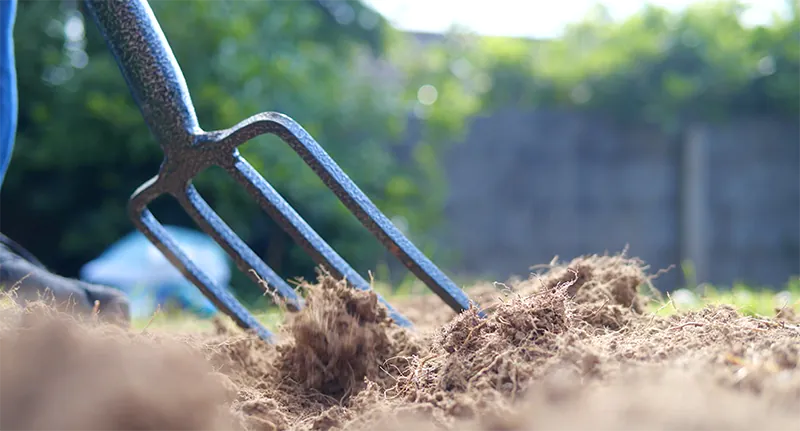
Do this to a depth of 20-25cm (just under the length of a school ruler) to really loosen up the top layer of the soil.
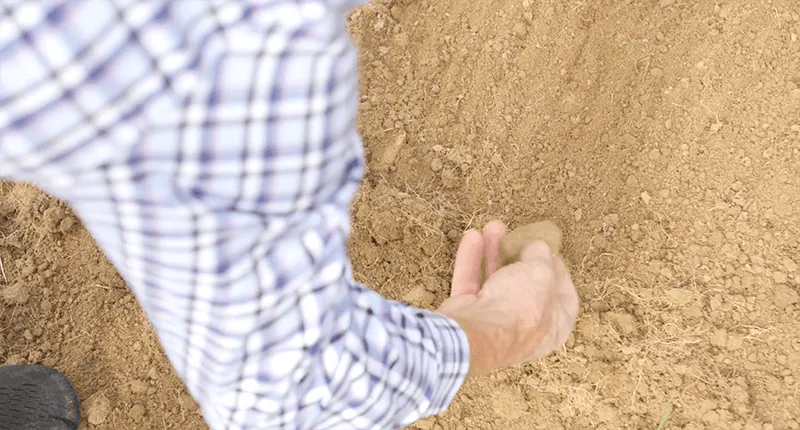
Think of it like cake batter – we don’t want to see any lumps, clumps or bumps – so also remove rocks or stones as they appear.

Using a rake - level out your seedbed.
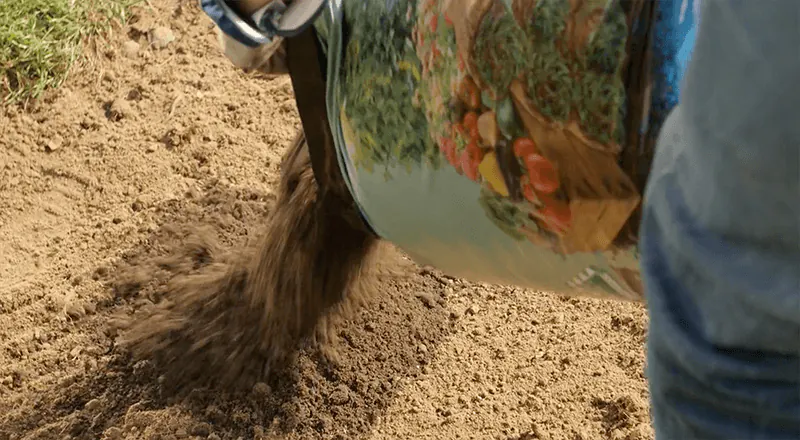
If you notice you have a lot of dips in your lawn, you can use topsoil to level these areas out. Likewise, if you believe the soil in your lawn to be of poor quality – you can also add topsoil to improve this.
Once you have a fine level seedbed, you can begin sowing.
Step Three: Sow the seed
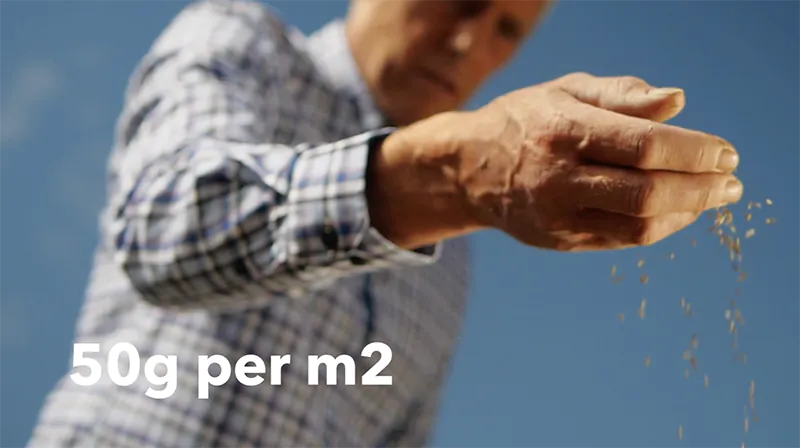
For a new lawn, you should sow at a rate of 50g per metre squared.
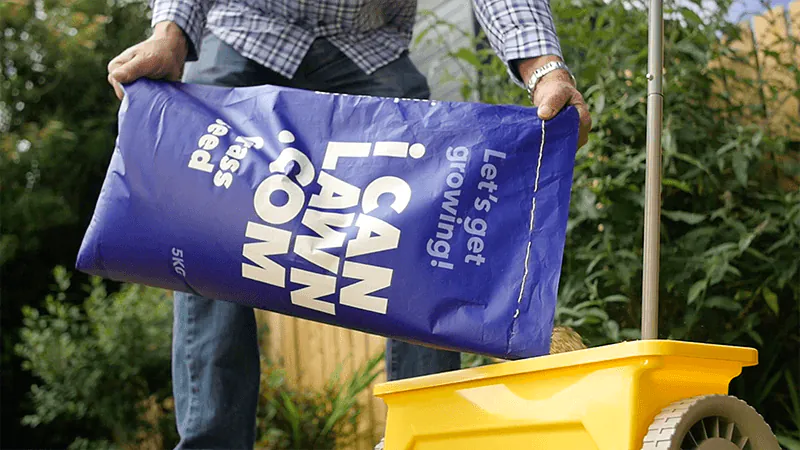
You can do this easily by hand, or you can use a seed spreader.

When sowing by hand, measure out a metre squared using bamboo canes or string.

Measure out 50g of seed at a time in a cup and go back for more seed when you need it.
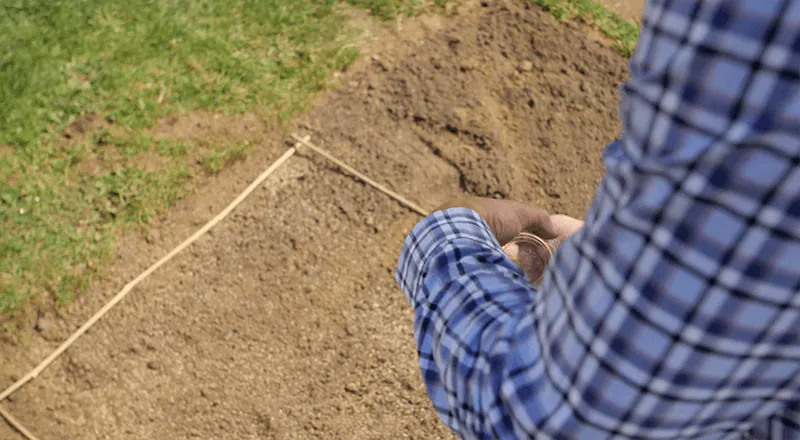
Scatter the seed from side-to-side widthways and lengthways to get good coverage.

Your seed needs space to grow and shouldn’t be in a heaped pile.
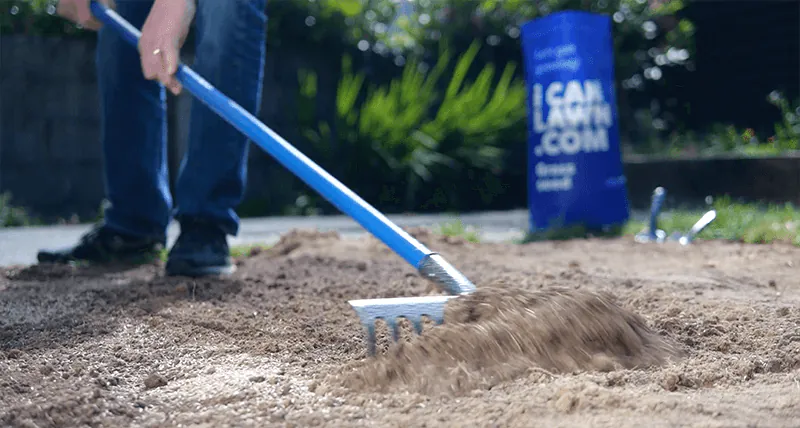
Using your rake again, rake the seed in so that it is in amongst the soil.

About three-pound coins stacked is both deep enough and shallow enough to allow the seed access to the water, heat and sunlight it needs to grow.
After scattering your seeds, it's time to make sure they grow!
Step Four: Firm in and water

To ensure that the seed is nicely embedded into the soil, walk across the seedbed with your feet, firming it in.

At icanlawn.com, we call this the penguin shuffle!
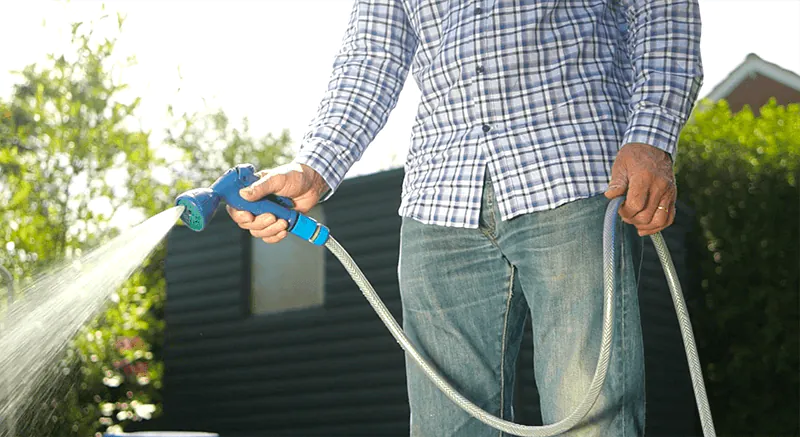
You should then water your growing seedlings once a day, every day for the first 6 weeks after sowing – this is how long it will take for your lawn to be fully grown and be ready for its first mow.
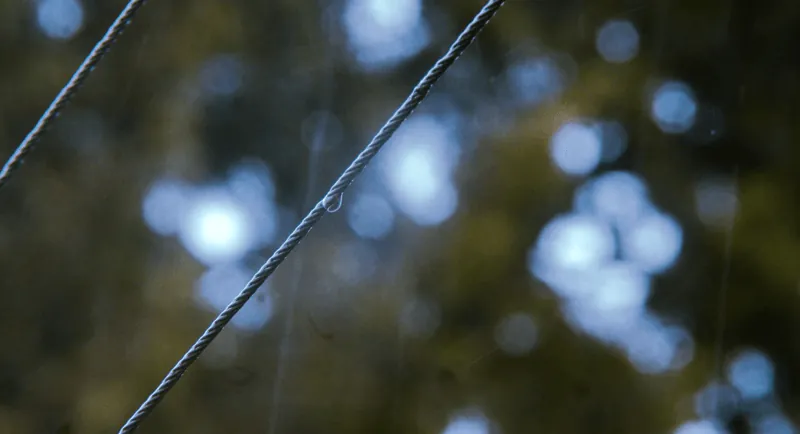
On days where it rains during the six weeks, you can skip watering. Try to keep traffic off your lawn while it grows.
To keep your seeds safe from hungry birds, we have a few tips to help!
Step Five: Keeps birds at bay
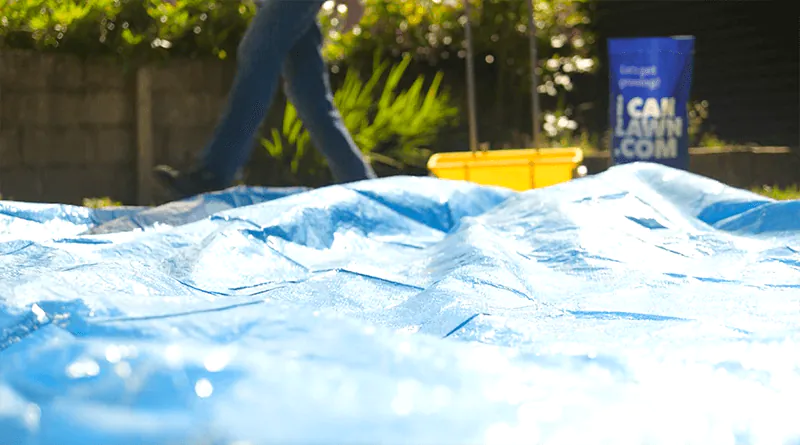
Cover your seed with a tarpaulin or net covering in the first few days after sowing, to keep birds at bay.
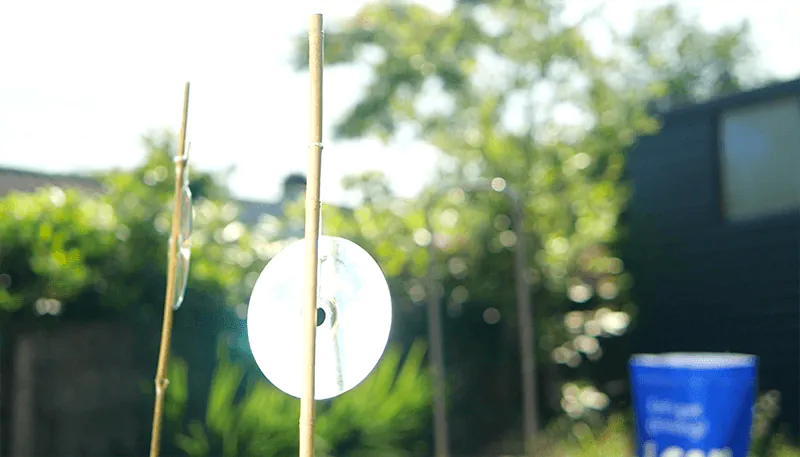
You can also use reflective items that will deter birds from eating your grass seed – such as CDs.
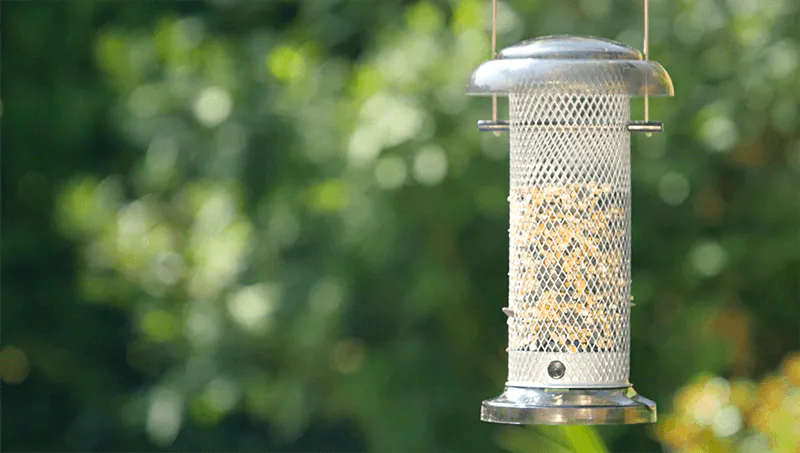
Alternatively, you can provide them with another food source that keeps everyone happy!
With your new lawn fully grown and now very long, it’s time to give it its first mow!
Step Six: First mow
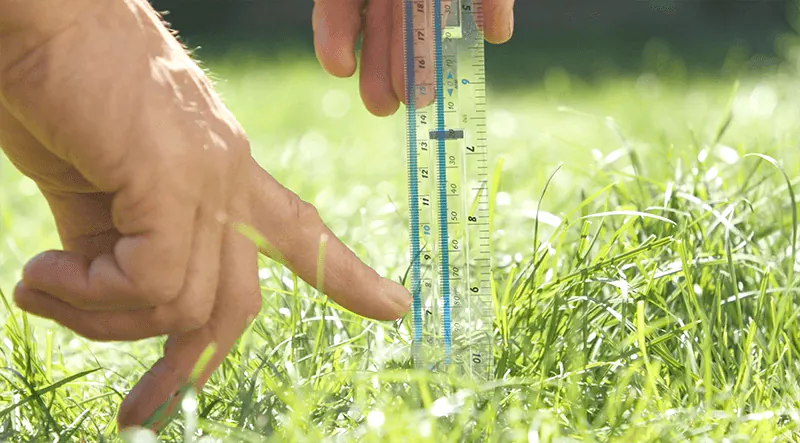
You can mow your lawn around the 6-8 week mark when your grass blades hit 5-7cm.

For your lawn’s first mow, make sure to cut it on the highest setting on your lawn mower.
Once your lawn is fully grown, it will reveal beautifully green and healthy grass. To keep it this way, you should remember to feed it regularly and seasonally, and remove weeds and moss as they appear.



